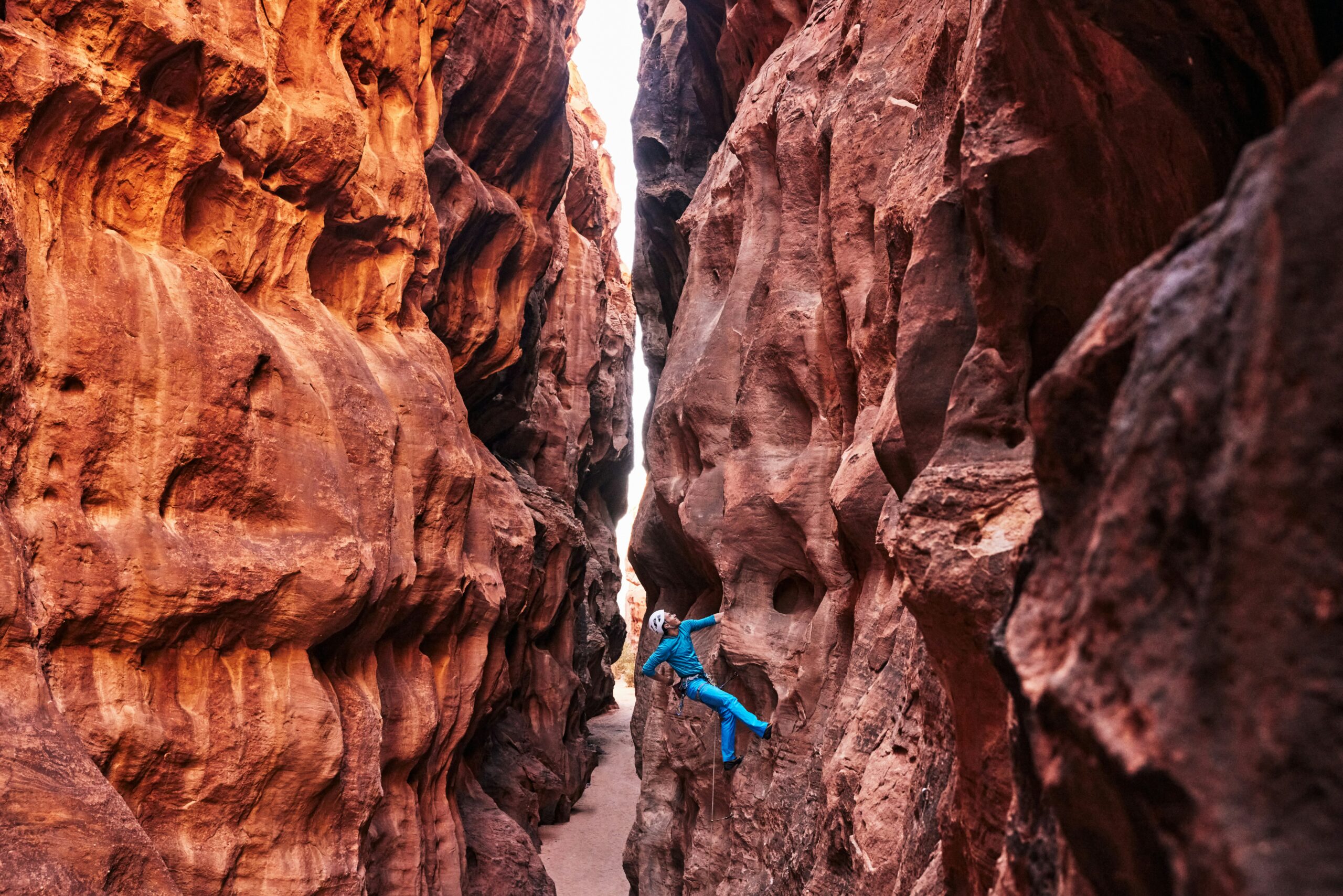Have you ever wondered about the safety of climbing Mount Shasta? With its stunning beauty and towering peak, this majestic mountain in Northern California has been attracting hikers and climbers from all over the world. But behind its allure lies a deeper question – just how dangerous is Mount Shasta to climb? This article will explore the potential risks and hazards that climbers may encounter on their journey to the summit, providing valuable insights for those seeking adventure in this awe-inspiring landscape. So, fasten your backpack and get ready to uncover the secrets of Mount Shasta's treacherous slopes!

Understanding Mount Shasta
Geographical location and features of Mount Shasta
Mount Shasta is a majestic volcano located in Northern California, standing tall with an elevation of 14,179 feet. It is part of the Cascade Range and is known for its picturesque beauty and spiritual significance for many. The mountain is surrounded by forests, lakes, and meadows, creating a truly breathtaking landscape.
History and importance of Mount Shasta
Mount Shasta holds immense cultural and historical significance to the Native American tribes in the region, including the Wintun, Modoc, and Shasta people. It is considered a spiritual center and has been the subject of many stories, myths, and legends.
In terms of mountaineering history, Mount Shasta attracted climbers as early as the mid-19th century. It quickly gained popularity among adventurers and explorers, eventually leading to the establishment of the first climbing route in 1854. Since then, Mount Shasta has become a popular destination for both experienced and novice climbers.
Climbing records and popular routes of Mount Shasta
Mount Shasta offers a variety of challenging routes for climbers of different skill levels. The most popular route, known as the Avalanche Gulch, attracts a large number of climbers each year. This route provides climbers with stunning views and a moderate level of difficulty. Other popular routes include the West Face, Casaval Ridge, and the Hotlum-Bolam Ridge.
Several records have been set on Mount Shasta throughout the years. Notably, in 2001, an American climber, John Maier, completed the fastest ascent and descent in just under four hours. This impressive feat highlights the athleticism and skill required to conquer this majestic mountain.
General Dangers of Mountain Climbing
Risk of falls while climbing
One of the primary dangers of mountaineering is the risk of falls. Mount Shasta's steep and icy terrain poses a challenge for climbers, especially during the ascent and descent. Loose rocks and slippery surfaces can increase the chances of losing footing and falling. Proper equipment, such as crampons and ice axes, is crucial for navigating these treacherous areas.
Risk of avalanches
Mount Shasta's snow-covered slopes create an increased risk of avalanches, especially during the winter and early spring months. Climbers must be aware of the snow conditions and be knowledgeable about analyzing the stability of the snowpack. Avalanches can be triggered by a variety of factors, such as heavy snowfall, wind, or even a single climber's movements. It is essential to have avalanche rescue equipment, including beacons, shovels, and probes, and to have the necessary training to respond to such situations.
Difficult weather conditions
Mount Shasta's location in the Cascade Range exposes climbers to unpredictable and harsh weather conditions. Sudden storms, high winds, and extreme temperature fluctuations are common occurrences on the mountain. The weather can change rapidly, posing significant risks to climbers. It is crucial to monitor weather forecasts, dress appropriately in layers, and be prepared to turn back if conditions become treacherous.
Altitude sickness
As climbers ascend higher on Mount Shasta, they venture into higher altitudes. The decrease in oxygen levels can lead to altitude sickness, a potentially dangerous condition. Symptoms of altitude sickness include headaches, nausea, fatigue, and shortness of breath. It is essential to acclimatize properly, hydrate adequately, and be aware of the signs of altitude sickness. If symptoms worsen, it may be necessary to descend to lower elevations to ensure one's safety.
Dehydration and hypothermia
Strenuous physical activity and extreme weather conditions can lead to dehydration and hypothermia. Climbers must maintain proper hydration by drinking plenty of water and replenishing electrolytes. Additionally, dressing appropriately for the cold temperatures and wind chill is crucial to prevent hypothermia. Layering clothing, using insulating materials, and having extra gear for emergencies are essential precautions.
Specific Dangers on Mount Shasta
Icy and snowy conditions
Mount Shasta's high altitude and cold climate mean that climbers should expect icy and snowy conditions throughout the year. Ice patches and snow-covered slopes can create slippery surfaces, increasing the risk of falls and accidents. Proper equipment, including crampons, ice axes, and gaiters, is necessary to navigate these hazards safely.
Steep climbing routes
Many of Mount Shasta's climbing routes traverse steep slopes and require technical climbing skills. These inclines can be physically demanding and mentally challenging, especially for climbers with limited experience. Climbers must be proficient in rope techniques, self-arrest, and glacier travel to safely navigate these steep sections.
Risk of rockfall and avalanche
The volcanic nature of Mount Shasta makes it prone to rockfalls. Loose rocks and boulders can become dislodged and tumble down the mountain, posing a hazard to climbers below. It is essential to be cautious in areas prone to rockfall and to wear a helmet for added protection.
Unpredictable weather patterns
Mount Shasta's weather patterns can change rapidly, with storms rolling in unexpectedly. The mountain's location influences its exposure to high winds and sudden temperature drops. Climbers must be prepared for the possibility of whiteout conditions, limited visibility, and other weather-related challenges. Monitoring the forecast, being aware of signs of approaching storms, and having the necessary equipment and knowledge to react appropriately are vital to staying safe.
Isolation-related issues
Mount Shasta's remote location and vast wilderness add to the potential dangers climbers may face. Limited access to medical assistance, communication difficulties, and delayed rescue response times can complicate situations in case of emergencies. It is crucial for climbers to properly prepare, carry emergency supplies, and inform others of their itinerary. Climbing with a partner or a group significantly enhances safety while ensuring someone can help in case of an emergency.
Accident Statistics on Mount Shasta
Total recorded accidents on Mount Shasta
Over the years, Mount Shasta has witnessed numerous accidents, ranging from minor injuries to fatalities. The exact number of recorded accidents may vary, but it is important to acknowledge that climbing this mountain carries inherent risks and potential dangers.
Causes of these accidents
The causes of accidents on Mount Shasta are multifaceted. Falls, avalanches, rockfalls, and exposure to harsh weather conditions are some of the common factors contributing to accidents. Inadequate preparation, lack of experience, and poor decision-making have also been identified as significant causes of accidents.
Fatalities recorded on Mount Shasta
While exact figures may fluctuate over time, Mount Shasta has unfortunately witnessed several fatalities. The risk of serious injury or death is a grim reality that climbers need to be aware of and take the necessary precautions to mitigate.
Comparing Mount Shasta's accident rate with other mountains
When compared to other challenging peaks, such as Everest or K2, Mount Shasta's accident rate is relatively lower. However, this should not diminish the seriousness of the risks involved. Each mountain presents its unique challenges, and prudent measures must be taken to ensure safety, regardless of the accident rate.

Preparing for the Climb
Physical fitness required
Climbing Mount Shasta demands a high level of physical fitness. The ascent involves long hours of continuous exertion, steep slopes, and carrying a heavy backpack. It is crucial to engage in regular exercise focused on building cardiovascular endurance, leg strength, and core stability. Preparing by hiking on similar terrain and gradually increasing difficulty will allow the body to adapt to the demands of the climb.
Necessary climbing skills
Basic climbing skills are necessary for tackling the challenges presented by Mount Shasta. Proficiency in rope techniques, self-arrest, glacier travel, and basic mountaineering skills is highly recommended. Seeking guidance from experienced climbers or professional guides can help participants develop and hone these skills before attempting the climb.
Essential climbing gear for Mount Shasta
Having the appropriate gear is essential for a safe and successful climb on Mount Shasta. Necessary equipment includes a helmet, crampons, ice axe, ropes, harnesses, and proper clothing layers. Climbers should invest in high-quality gear and undergo training to understand how to use it effectively. Packing essentials such as food, water, a first aid kit, emergency shelter, and navigation tools is crucial to be self-sufficient in the mountainous environment.
Planning for weather and route conditions
Careful planning is paramount for a successful summit on Mount Shasta. Climbers should closely monitor weather forecasts, paying attention to temperature changes, wind speeds, and the likelihood of storms. Understanding the condition of the chosen route and obtaining up-to-date information about the mountain's conditions from local ranger stations or experienced climbers will help determine the best time to attempt the climb.
Mountain Climbing Training
Benefits of having proper training
Proper training significantly enhances climbers' safety and increases their chances of success on Mount Shasta. Training helps develop essential skills, fitness, and knowledge necessary for navigating the challenges of mountain climbing. It teaches climbers how to assess risks, make informed decisions, and respond effectively in emergency situations. Training also instills a sense of confidence, allowing climbers to enjoy the experience while minimizing hazards.
Different types of training for mountain climbing
Various training options are available to aspiring Mount Shasta climbers. These include basic mountaineering courses, which cover essential skills, such as rope techniques, glacier travel, and self-rescue. Additionally, physical conditioning programs focusing on strength, endurance, and flexibility will prepare climbers for the physical demands of the climb. It is important to tailor training to individual abilities and gradually increase the difficulty to avoid injury and improve performance.
Where to receive climbing training
Climbing training programs and courses can be found through reputable climbing schools, outdoor education centers, or professional mountaineering organizations. These organizations offer structured training programs led by experienced guides, providing participants with the necessary skills and knowledge to tackle the challenges of Mount Shasta and other mountains safely.

Safety Measures while Climbing Mount Shasta
Importance of climbing with a partner or group
Climbing Mount Shasta alone is highly discouraged due to the inherent risks and potential dangers. Climbing with a partner or in a group ensures there is someone to assist in case of emergencies and enhances overall safety. Partners or group members can help with navigation, assess potential hazards, share equipment, and provide support and encouragement throughout the climb.
How to handle avalanches and falls
In the event of an avalanche or a fall, quick thinking and appropriate actions are crucial. Climbers should carry and know how to use avalanche rescue equipment, such as beacons, shovels, and probes, to locate and help rescue buried climbers. The practice of self-arrest techniques can help prevent slides and falls from turning into more serious accidents. Regular training and familiarization with these techniques are essential for quick and efficient responses to potential emergencies.
First aid essentials
Carrying a well-stocked first aid kit is essential when climbing Mount Shasta. The kit should include items such as bandages, antiseptic ointment, pain relievers, blister treatment, and other essentials. It is imperative to have the knowledge and training to administer basic first aid and treat common mountaineering injuries, such as sprains, cuts, and altitude-related illnesses.
Communication methods in case of emergencies
Establishing proper communication methods is critical in case of emergencies on Mount Shasta. Climbers should carry communication devices, such as radios, satellite phones, or personal locator beacons, allowing them to call for help when needed. Familiarizing oneself with the local emergency response protocols and communicating the climbing plans with someone off the mountain can significantly improve the chances of a swift and efficient response in case of an emergency.
Role of Mountain Guides
Why hiring a mountain guide can be beneficial
Hiring a mountain guide is highly recommended for climbers attempting Mount Shasta, especially for those with limited experience. Experienced guides possess in-depth knowledge of the mountain, including its routes, conditions, and potential hazards. They can assess risks, navigate challenging sections, and provide essential guidance throughout the climb. Guides' expertise enhances climbers' safety, increases their chances of success, and allows them to fully immerse themselves in the experience without worrying about route finding or technical challenges.
Role of the guide in ensuring safety
Mountain guides play a pivotal role in ensuring the safety of climbers on Mount Shasta. They are responsible for educating climbers about the mountain's risks, teaching essential skills, and guiding climbers through treacherous sections. Guides monitor weather conditions, assess the stability of the snowpack, and make informed decisions to ensure the safety of the group. Their experience and training make them adept at handling emergencies and responding appropriately to any unforeseen circumstances.
How to choose a reliable mountain guide
When selecting a guide for a Mount Shasta expedition, it is important to consider their qualifications, experience, and reputation. Look for guides who are certified by recognized mountaineering organizations and have extensive experience leading climbs on Mount Shasta. Seek recommendations from trusted sources, read reviews, and communicate directly with prospective guides to ensure they are a good fit for the specific goals and needs of the climbing party.
Survival Stories from Mount Shasta
Personal experiences from climbers
Mount Shasta has witnessed numerous survival stories, with climbers sharing their firsthand experiences. These stories provide valuable insights into the potential risks and the importance of preparation, resilience, and decision-making during challenging situations. Personal accounts capture the triumphs, failures, and lessons learned from surviving adverse conditions on the mountain.
Successful and dangerous climbing incidents
Stories from successful climbs remind us of the rewards and achievements that can be gained on Mount Shasta. These accounts showcase the careful planning, preparation, and execution required to reach the summit safely. However, it is important to acknowledge the dangers that climbers may face. Accounts of dangerous incidents serve as reminders of the potential hazards and the importance of safety measures while on the mountain.
Lessons learned from these incidents
Survival stories and incidents on Mount Shasta offer important lessons for aspiring climbers. They underscore the significance of proper training, thorough preparation, and decision-making in precarious situations. Learning from the experiences of others can help climbers avoid common mistakes, understand the risks, and ultimately increase their chances of a safe and successful climb.
Comparing Mount Shasta With Other Risky Mountains
Risk level of Mount Shasta compared to Everest, K2, and others
Mount Shasta, while challenging, has a lower risk level compared to some of the world's most dangerous peaks, such as Everest and K2. The technical difficulty, the altitude, and the unpredictable weather conditions on Mount Shasta are relatively more manageable. However, climbers should not underestimate the risks involved and must still exercise caution and proper preparation.
Similarities and differences in the dangers present
Despite differences in overall risk levels, Mount Shasta shares certain dangers with other challenging mountains. Factors such as avalanches, falls, and exposure to extreme weather conditions are common risks faced by climbers on many mountains. However, each mountain presents its unique set of challenges and hazards, requiring climbers to adapt their skills and preparations accordingly.
In conclusion, Mount Shasta offers a thrilling and rewarding climbing experience for those who are properly prepared and mindful of the potential dangers. By understanding the mountain's geographical features, history, and risks, climbers can undertake this adventure with confidence. However, it is essential to approach the climb with respect for the mountain's challenges, prioritize safety measures, and remain adaptable to changing conditions. With proper training, careful planning, and good decision-making, the allure of conquering Mount Shasta can be transformed into a safe and memorable adventure.
